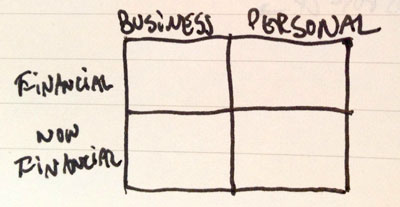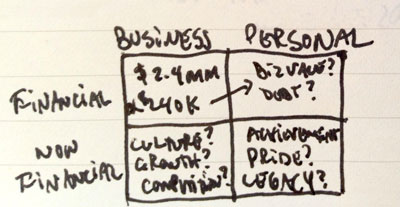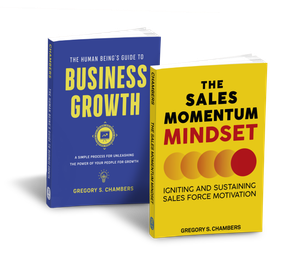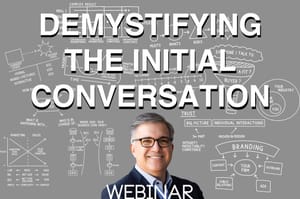Life is About Outcomes
Life is About Outcomes

This article originally appeared in Amalgamate: A Mix of Ideas for Your Business, Summer 2015
Let me share a concept that I was exposed to by Phil Symchych, the Business Wealth Builder. The core of his practice centers on the question, “What does your Personal Balance Sheet look like?”
The balance sheet he refers to has 4 quadrants. Financial, Non-financial, Business and Personal.

If True Wealth is self-directed time, then the thought of focusing on desired Outcomes and not Tasks to speed up actual results makes sense. Let’s take a fictional desired outcome and use the 4 grid questions.
The CEO of a $20MM firm says “I want to be the dominant player in this market.” It’s an outcome but it’s intangible and doesn’t fit the grid yet. To translate it into a Business/Financial measure, we convert “dominate” to a measurable metric of “75% market share.” That allows us to put a dollar amount on the delta, which we estimate as an additional $2.4MM in sales a year. So far, so good.
Now, before we jump into the tactics and tasks required to get there, Symchych suggests we pause and consider the outcomes in our 4 grids.

In grid square 1, Financial and Business we enter the figure we worked up, $2.4MM in top line growth and $240K EBITDA improvement. The desired outcome.
In grid square 2, Financial and Personal, we pause and consider why the target is important to our pursuit of true wealth. What will the $240K earnings mean personally? An increase in business value? Increased income to pay off debt? Cash to invest in a new venture?
In grid square 3, Non-Financial and Business, our outcome of “dominate this niche” gets translated into many of the non-tangibles that come from such a quest. Culture, Growth, and Competition come to mind.
In grid square 4, Non-financial and Personal we find the touchy feely aspects of the effort. It answers the “Why bother?” question. As in “Why bother doing this?” Responses sound like Achievement, Pride and Legacy.
Ultimately, using a tool like this allows you to consider if your desired outcome builds on your strengths. Those of your firm and yourself.
We go through all of this because the exact alignment of Outcomes and Strengths increases the speed of results.
Good stuff.





